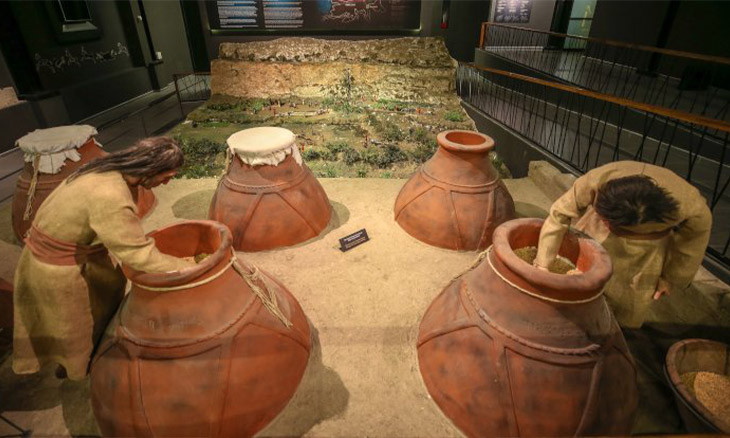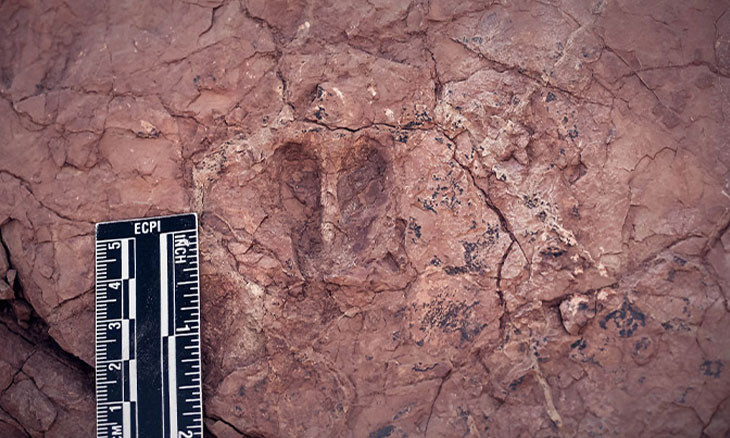Treasure hunters destroying ancient site in eastern Turkey
As excavations began on Zırnekol Hill in eastern Turkey, where the mass residential area of the ancient Kingdom of Van was located, archaeologists discovered that citizens looking for treasure had already rummaged through many of the ruins and damaged them.
İdris Yılmaz / DUVAR
Excavations of the ancient city on Zırnekol Hill in eastern Turkey have revealed ruins badly damaged by amateur treasure hunters and construction equipment, archeologists reported.
Turkish citizens looking to make it big have mistaken ancient markings for symbols indicating treasure, and have destroyed priceless ruins and artifacts trying to unearth nonexistent riches.
The Kingdom of Van, also known as Urartu, refers to the Iron Age kingdom centered around Lake Van near the Turkish border with Armenia. The kingdom rose to power in the mid-9th century BC and was defeated by the Iranian Medes in the early 6th century BC. Ruins of the kingdom were first discovered in the 19th century when European archaeologists, inspired by ancient Armenian writings, discovered heretofore unseen cuneiform inscriptions in the region.
Zırnekol Hill is home to the remains of a huge, grid-planned city - the first grid-planned city in the Anatolian region, in fact. Experts who study the region and its history reacted to the news of the city’s destruction with dismay, decrying the public’s lack of awareness about the importance of ancient artifacts.
Arsisa Language and Culture Research Association Executive Member Cevdet Zilanlı said that each ancient stone is inherited by the future of humanity.
“We certainly can't get anywhere without this awareness [of history],” he said, “This is our greatest social deficiency. That's why I say, ‘Every historical stone is a legacy left to us from past civilizations. It is a treasure and it is worth gold.”
The area was declared an archaeological protection site in order to shed light on the history of that period, the Iron Age, and to help people understand the development that began here, said the head of the Archaeology Department at Van Yüzüncü Yıl University, Dr. Rafet Çavuşoğlu.
He further stated that excavation and archaeological work at the site is not only critical to understanding who originally built the site - Urartu, Persia, Hellenic Greece, or Armenia - but to understanding the history of Eastern Anatolia.
The grid structure of the city indicates that Zırnekol Hill was critical in the development of the region. But if the site is not preserved, uncovering and understanding this history will become increasingly difficult.
According to sociologist Zeynel Abidin Çelebi, the public does not understand the history of the region and instead looks at the site as an opportunity to uncover treasure.
There is a misconception that markings on the stone, indicating aspects of everyday life, are in fact indicating the location of treasure.
"Today, treasure hunters wrongly perceive signs such as crosses, chickens, lions, ducks, and eggs as treasure signs. This is completely wrong,” he explained, “A cross marks either graves or places of worship."
Meanwhile, the chicken and eggs are often used as a symbolism to ensure structures' durability, he said, adding that killing chicken was forbidden in many ancient civilizations for this reason.
"Chicken figures were drawn on stones to explain that it was forbidden […] The perception that these are signs of treasure is wrong. Our people should not be fooled by this - would you mark your treasure with signs?”
The destruction needs to stop, Çelebi said, so that archaeologists can help these regions to better understand their history.
“What is destroyed is in fact the legacy left to the future,” he said.

 'World's biggest Urartu museum' in southeastern Turkey plans for post-pandemic visitorsCoronavirus
'World's biggest Urartu museum' in southeastern Turkey plans for post-pandemic visitorsCoronavirus Turkish scientists find 33-million-year-old animal footprints in Central AnatoliaCulture
Turkish scientists find 33-million-year-old animal footprints in Central AnatoliaCulture Investigation launched into missing artifacts in prestigious Antalya Archaeology MuseumCulture
Investigation launched into missing artifacts in prestigious Antalya Archaeology MuseumCulture